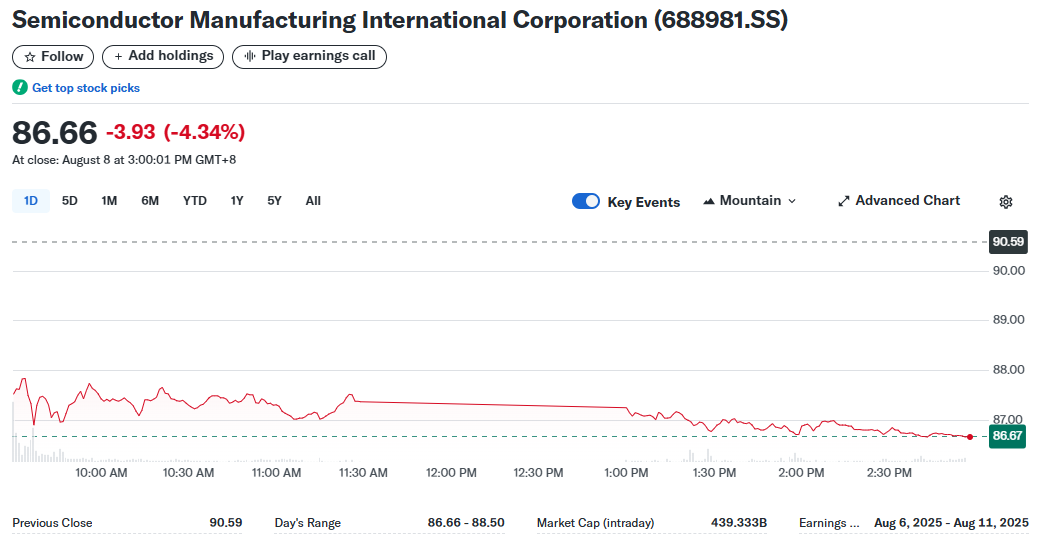Semiconductor Manufacturing International Corporation (SMIC), China’s largest chipmaker, saw its shares tumble 4.34% on Thursday, closing at ¥86.66.
The sell-off came despite the company reporting a robust 16.2% year-on-year revenue increase in the second quarter, reaching US$2.2 billion.
Net profit for the period, however, declined 19.5% to US$132.5 million, with analysts citing increased production costs and ongoing supply chain pressures. The company shipped 2.4 million wafers during the quarter, maintaining an impressive factory utilisation rate of 92.5%.
The market reaction suggests investors remain cautious, weighing geopolitical risks and potential impacts from trade policy changes, despite the upbeat sales performance.

SMIC downplayed the potential damage from US President Donald Trump’s proposed 100% tariff on imported chips.
The company highlighted its heavy reliance on China’s domestic market, which accounted for 84.1% of Q2 sales, up from 80.3% in the same quarter last year. In contrast, sales to the Americas fell to 12.9%.
This strategic shift toward domestic consumption has helped Chinese semiconductor firms build resilience against international trade headwinds. SMIC’s co-CEO noted that previous tariff disputes resulted in less than a 10% impact on overseas clients, suggesting that a similar outcome is likely this time.
While SMIC’s domestic focus buffers it from the worst effects, industry experts warn that a 100% tariff on semiconductors could have far-reaching consequences for global supply chains.
Research indicates that every US$1 increase in semiconductor costs translates into a US$3 increase in consumer product prices.
The construction of new fabrication plants would also become more expensive. A 1% rise in duty rates can raise fab construction costs by 0.64%, meaning a 10% tariff could add billions to expansion projects. For example, Taiwan Semiconductor Manufacturing Company (TSMC) could face an additional US$6.4 billion in costs for its US operations.
Such cost escalations threaten to slow the global semiconductor industry’s projected growth from US$627 billion in 2024 to over US$1 trillion by 2030.
Looking ahead, SMIC projects a Q3 revenue increase of 5%–7%, supported by stronger shipments and higher average selling prices. The company maintains that domestic demand will remain its core growth driver, while it continues to operate under restrictions from the US Department of Commerce’s entity list.
Despite these constraints, SMIC’s operational performance shows no signs of slowing. The company’s ability to maintain high utilisation rates amid global tensions reinforces its position as a key player in the semiconductor race.
For investors, SMIC’s latest results present a mixed picture: strong sales growth and strategic market positioning on one side, and profit compression alongside geopolitical uncertainty on the other.
The post SMIC (SMIC) Stock: Falls 4.34% Despite 16% Q2 Revenue Growth appeared first on CoinCentral.
Also read: Is A Pi Network Price Recovery Possible- Expert Shares Key Strategy